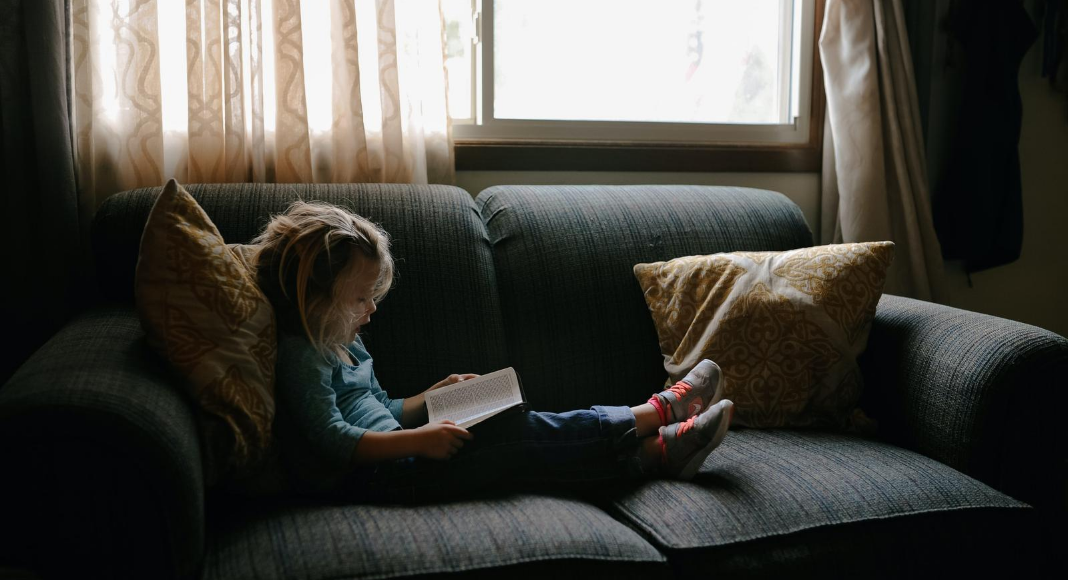I sometimes find myself in a rut, wondering whether time together with my kids is well spent. Is our day too busy? Too open? Too structured? Too boring? Too repetitive? Educational enough? Pinterest-ing enough? Low-tech enough?
But when my young sons walk towards me with a book in their tiny, outstretched hands and climb into my lap, I know I’m doing something right.

As a child, I loved library day in elementary school. I can still hear the soothing voice of the librarian and the crinkle of the plastic book jacket as she turned it around to show us the pictures. I can feel the excitement of choosing a new book from their collection, writing my name on the checkout card, and toting it home to read with my parents.
As a mom, reading brings together some of my favorite things: kid snuggles, the written word, and… quiet. Most of the creative work is done for me, as the lyrical prose and colorful illustrations are right there on my lap. All I have to do is bring it to life for my kids.
There are countless studies on the benefits of reading for children of all ages. Here are some of my favorite reading stats and tips.
- Go for broke. I read this tip recently in a parenting magazine, and it resonated with me because I don’t typically do this: voices, theatrics and the like. Sure, sometimes we’re just too tired or the book doesn’t really call for an animated reader. But there are plenty of opportunities to read in your best timid Piglet voice or to boom like Aslan.
- Repetition is good. I find myself begging my toddler to choose a different book than the one we read for the past 87 nights in a row. While variety certainly has its place, Scholastic.com says that listening to the same story multiple times allows kids to dive deeper into its meaning and make connections between themselves and the book.
- Read 20 minutes every day. According to Every Child Reads, a child who reads or is read to 20 minutes each day will be exposed to 1.8 million words per year, whereas reading only 5 minutes per day exposes them to 282,000 words per year.
- Model reading paper over screens. It is regretfully second nature for me to reach for my phone when I have a spare moment in my day. To combat this tendency, I have paper reading options all over the house for me and my kids. The Sunday paper lives on the kitchen table, magazines reside on the end table, novels are stacked on the nightstand, and kid books are shelved in plain sight in three different rooms.
- Create a library at home. My 3-year-old and I recently had a fun morning creating a library with our book bins, a cash register, and a pile of pillows. He chose his books (digging out some he hadn’t read in a while), scanned and checked them out, and then settled into the pillows for us to read together.
- Read aloud at any age. Reading aloud helps the brain make connections between the written and spoken word, not to mention the added bonus of associating the comfort of sitting with you and a story they love.
Some of my most comforting memories of childhood involve reading and the excitement of my next book. This love of reading has followed me into adulthood, where I read anything I can get my hands on in between playtime, meals and diaper changes.
When you’re out of ideas of what to do with your kids – like I am – you can’t go wrong with a stack of books and a snuggle.












